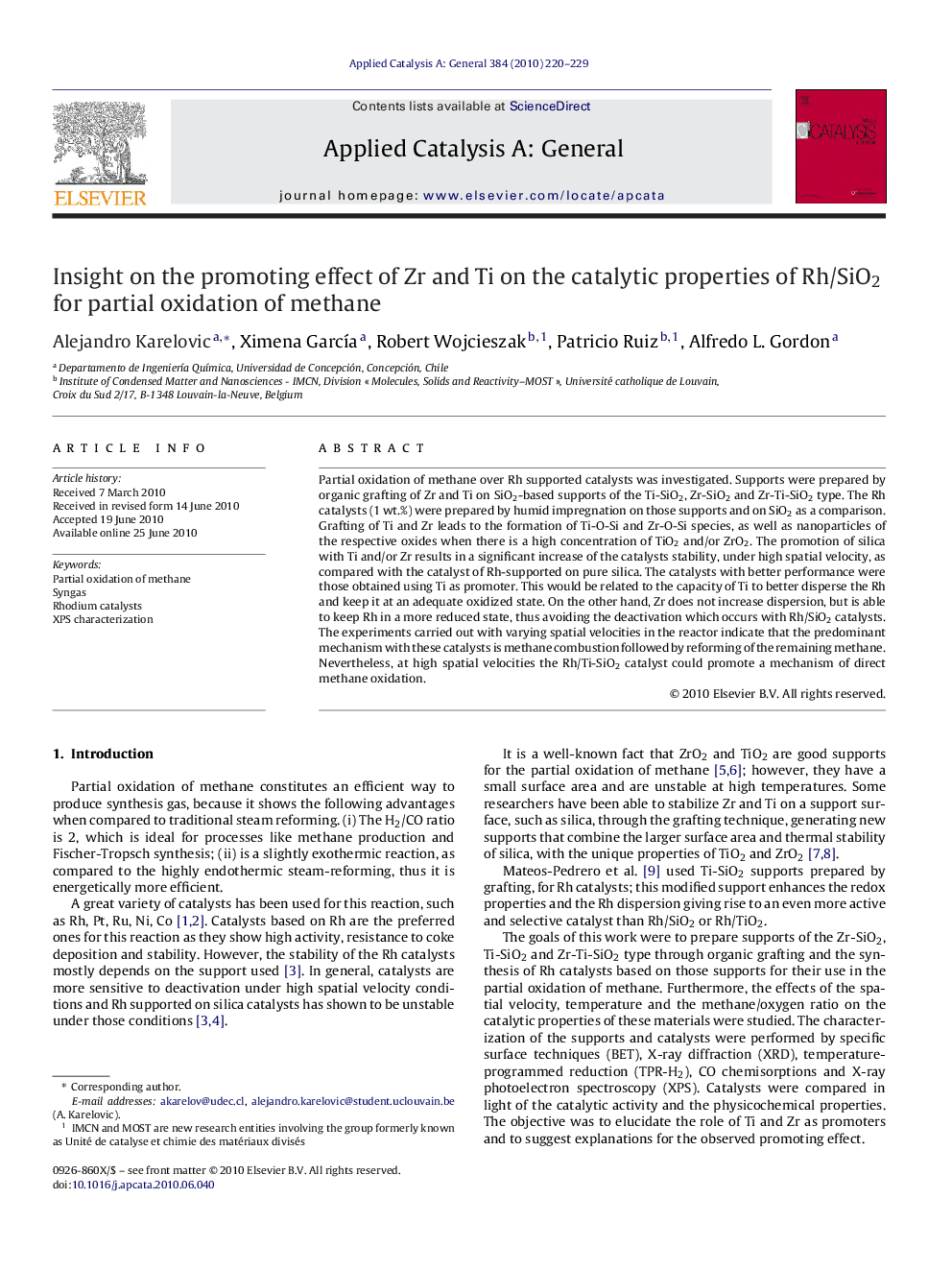| Article ID | Journal | Published Year | Pages | File Type |
|---|---|---|---|---|
| 41957 | Applied Catalysis A: General | 2010 | 10 Pages |
Partial oxidation of methane over Rh supported catalysts was investigated. Supports were prepared by organic grafting of Zr and Ti on SiO2-based supports of the Ti-SiO2, Zr-SiO2 and Zr-Ti-SiO2 type. The Rh catalysts (1 wt.%) were prepared by humid impregnation on those supports and on SiO2 as a comparison. Grafting of Ti and Zr leads to the formation of Ti-O-Si and Zr-O-Si species, as well as nanoparticles of the respective oxides when there is a high concentration of TiO2 and/or ZrO2. The promotion of silica with Ti and/or Zr results in a significant increase of the catalysts stability, under high spatial velocity, as compared with the catalyst of Rh-supported on pure silica. The catalysts with better performance were those obtained using Ti as promoter. This would be related to the capacity of Ti to better disperse the Rh and keep it at an adequate oxidized state. On the other hand, Zr does not increase dispersion, but is able to keep Rh in a more reduced state, thus avoiding the deactivation which occurs with Rh/SiO2 catalysts. The experiments carried out with varying spatial velocities in the reactor indicate that the predominant mechanism with these catalysts is methane combustion followed by reforming of the remaining methane. Nevertheless, at high spatial velocities the Rh/Ti-SiO2 catalyst could promote a mechanism of direct methane oxidation.
Graphical abstractFigure optionsDownload full-size imageDownload high-quality image (63 K)Download as PowerPoint slideResearch highlights▶ Ti and Zr addition to Rh/SiO2 catalyst enhances its activity and stability in partial oxidation of methane. ▶ The promoters change the oxidation states of Rh, improving its performances in various ways. ▶ Ti enhances the dispersion of Rh promoting its oxidation while Zr can help to maintain Rh in a reduced state. ▶ Grafting of Zr and Ti leads to the formation of TiO2 and ZrO2 in strong interaction with SiO2 which stabilizes these elements on the surface.
